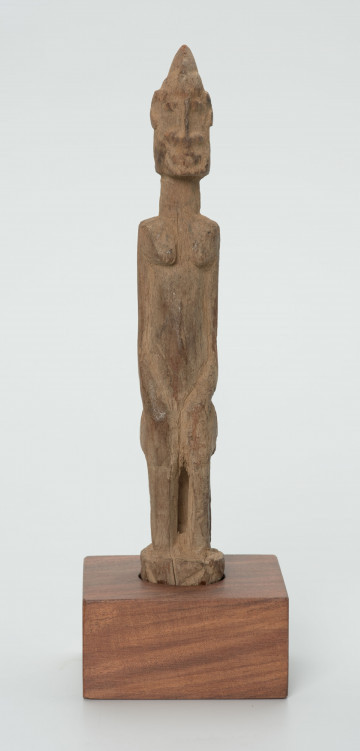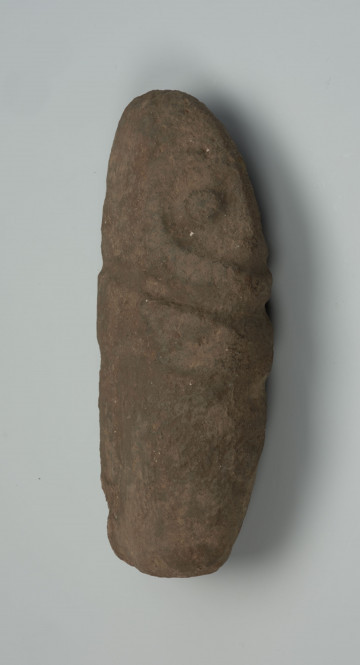
Figurine - ancestor
między 1901 — 1950
National Museum in Szczecin
Part of the collection: Collection of Dogonian art
According to Dogon mythology, their ancestors came to Earth from a planet in the Sirius system. They made their journey on koro, a type of boat popularly known as the Nommo Ark, created by the god Amma. The koro's descent to Earth coincided with the appearance of sunlight and the fall of purifying rain. Hitting the Earth, koro caused a massive depression to form, which today fills the waters of Lake Debo.Many proponents of paleo-astronautics look to these myths for evidence of space travel by the Dogon ancestors or their contacts with extra-terrestrial civilisations. These theories are also fuelled by polychromatic cave paintings, which can be found in the Dogon country. As recently as the 1930s, 70 such sites were known. With the passing of time, many of them have been destroyed, mainly due to rainfall. Today, the largest and most popular concentration of cave paintings is in the village of Songho located on the Plateau, 60 km east of Mopti. The polychromatic paintings are located on a vertical rock and cover an area about 37 metres long and 5-6 metres high. The villagers call this place Kondi Pégue (refuge of the circumcised). The paintings are white, black and red. White symbolises order, black is its opposite and represents chaos, while red is interpreted as a sign of vitality. The drawings visible on the rock in Songho are used by the Dogon elders to explain the intricacies of Dogon cosmogony to young boys undergoing initiation, while proponents of extra-terrestrial contacts look for representations of spaceships and spacesuits enabling space travel.
Ewa Prądzyńska
Author / creator
Dimensions
cały obiekt: height: 25,5 cm, width: 5 cm
Object type
figure
Creation time / dating
Creation / finding place
Identification number
Location / status

między 1901 — 1950
National Museum in Szczecin

między 1951 — 2000
National Museum in Szczecin

między 1951 — 2000
National Museum in Szczecin
DISCOVER this TOPIC
National Museum in Lublin
DISCOVER this PATH
Educational path